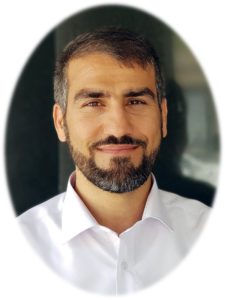
Sharif Moradi Ph.D.
Department of Stem Cells and Developmental Biology
Assistant professor
Sharif Moradi got his BSc in Plant Biology from Khwarizmi University of Tehran in 2008 and his MSc in Cell & Molecular Biology from Tehran University in 2010. During his master, he utilized an explant culture to cultivate, and analyze the expression of two glaucoma-related proteins FOXC1 and PITX2 in trabecular meshwork cells of the human eye. He then joined Royan Institute as a PhD student of Developmental Biology and worked in Prof. Hossein Baharvand’s lab to analyze the expression and functional significance of microRNAs in ES and iPS cells. In 2014, he moved to Germany and worked for one year in Prof. Thomas Braun’s lab at Max-Planck Institute (Bad Nauheim) to do microRNA functional analyses in ES cells along with microRNA expression profiling during ES cell derivation from murine blastocysts. He got his PhD in 2017 and is now an assistant professor at Royan Institute, focusing on non-coding RNAs especially microRNAs in immortal cells (ES and iPS cells as well as cancer cells). He is particularly interested in developing diagnostic tools and therapeutic strategies against cancer using non-coding RNAs.
Our focus is on two research areas that are somewhat related to each other: pluripotency and tumorigenicity. The interface of these two phenomena is immortality: pluripotency represents normal immortality in vitro (pluripotency exists only transiently in vivo), whereas tumorigenesis is the abnormal, uncontrolled proliferation of cancer cells both in vitro and in vivo.
– Pluripotency
We are interested to figure out the mechanisms underlying the immortality of pluripotent stem cells (PSCs), i.e. embryonic stem cells (ESCs) and induced pluripotent stem cells (iPSCs) in order to exploit the obtained knowledge for efficient and safe generation of PSCs for potential regenerative medicine applications in future. Our mechanistic studies are focused on microRNA and lncRNA biology as well as small-molecule-based alterations in gene expression. Therefore, we aim to derive safe PSCs using small molecules and microRNAs to eliminate the need to use viruses and/or genomic integration. We also aim at generating safe iPSCs with high efficiency, since safe approaches to iPSC reprogramming usually suffer from extremely low efficiencies. We are also working on pre-implantation embryogenesis, as PSCs are present in embryos only during this time window. Notably, although PSCs hold great promise in regenerative medicine, the residual PSCs within the PSC-derived differentiated cell population might lead to tumor formation in patient in long term. We are currently developing strategies to remove tumorigenic PSCs from the differentiated cell populations in order to ensure the safety of PSC-based cell-replacement therapies.
– Tumorigenicity
Our research on PSCs and their tumorigenic potential along with the fact that we all are witnessing how a large number of people and especially our dearest and nearest people die of cancer, encouraged us to start focusing on tumors and cancers as a top priority. In Iran, cancer has had an increasing incidence and mortality rate in recent years. In Iranian men, stomach cancer, and in Iranian women, breast cancer constitute the most prevalent cancers. We are starting to focus on these cancer types as they are also highly prevalent and deadly in other ethnicities and societies as well. Since cancers related to digestive tract are more common in Iran, we have put more focus on these types of cancers, particularly gastric and esophageal cancers. We want to fight cancers using two main approaches:
– Early cancer diagnosis
The majority of cancers, including digestive tract cancers, are diagnosed only when the tumor has grown into a large size and metastasized to other parts of the patient’s body. In such situations, it is often too late for the clinicians to be able to effectively help cancer patients. Patients with esophageal cancer, for example, mostly die within 1 year of diagnosis, because the cancer is usually not detected in an early stage. The benefit of early detection of cancer is that it remarkably enhances the chances for successful treatments in an early stage, thereby saving many lives. One of our important missions is to try to detect cancers in an early stage through finding early biomarkers, such as circulating microRNAs, in body fluids. To this end, we are trying to develop biosensors for fast, sensitive, and specific biomarker detection. Our plan is to bring biosensors to the bedside for potential point-of-care testing. Effective point-of-care testing will lead to more successful cancer therapy.
– Cancer therapy
The majority of cancers are currently not diagnosed in an early stage or are too difficult to be effectively targeted, and therefore kill many patients. Current strategies appear to be ineffective or less efficient, since there is currently a high rate of cancer mortality worldwide. To kill cancer cells, we are interested in using targeted therapies and combinatorial therapeutic approaches exploiting the potential of microRNAs and siRNAs along with small molecules modulating RNAi and other pathways. We are also interested to use natural compounds along with other regimens to increase the chances for successful therapy. Cancers are too complicated and we need to understand the biology of cancer cells more accurately. We are also highly interested to investigate the mechanisms of cancer development and metastasis. We hope that our collective efforts contribute to making a world with less pain and more happiness in future.
MSc and PhD Students
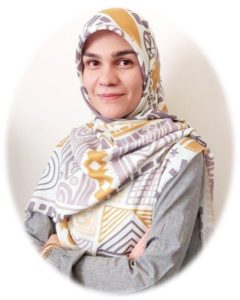
Zahra Abdi, MSc student
Project: In silico analysis of the contribution of microRNA biogenesis deregulations to carcinogenesis

Saeed Mohebbi, MSc researcher
Project: Early detection of cancer using protein and nucleic acid biomarkers
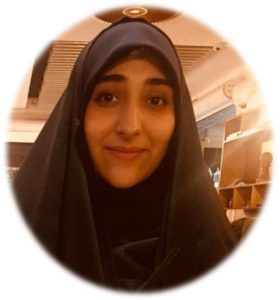
Afsaneh Yazdani Movahed, MSc student
Project: Potential of RNAi-modulating compounds in eliminating tumorigenic pluripotent stem cells
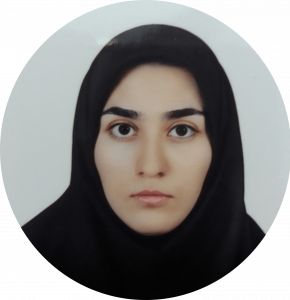
Fahimeh Shirzadeh, MSc student
Project: MicroRNA-assisted transdifferentiation of fibroblasts into renal epithelial cells

Hanieh Sadeghi, MSc student
Project: Suppressing lung cancer cells using the secretome of cardiomyocytes differentiated from human pluripotent stem cells

Samira Soori, Alumni
Project: Functional analysis of microRNAs during embryonic stem cell derivation

Dr. Mohammad Masoudi, Postdoc Alumni
Project: Generation of iPS cells using miRNAs
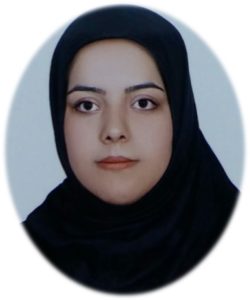
Fatemeh Azadedel, MSc student
Project: Discovery of key microRNAs for treating gastric cancer
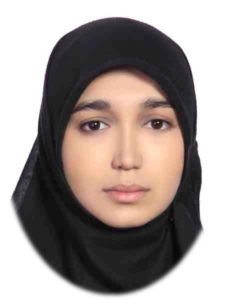
Hanieh Torkian, MSc student
Project: Targeting of esophageal cancer in mouse models utilizing microRNA pathway
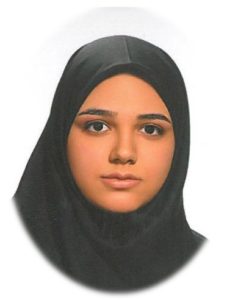
Sara Rahbar, MSc student
Project: Effect of SIN1 suppression on the growth and migration of cancer cells
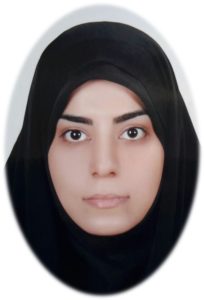
Azam Akbari, PhD student
Project: Human pluripotent stem cells as vaccines against cancer cells
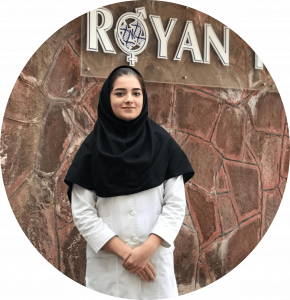
Rana Bagheri, Alumni
Project: Elimination of residual pluripotent cells from differentiated cell populations using small molecules
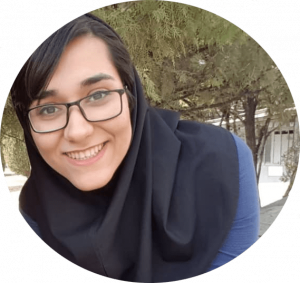
Parisa Torabi, Alumni
Project: Effective targeting of esophageal cancer using a combinatorial approach
Selected publications:
- Bagheri R, Yazdani Movahed A, Guenther S, Pakzad M, Samadian A, Azimzadeh Jamalkandi S, Baharvand H, Braun T, Moradi S*. Inhibition of residual undifferentiated pluripotent stem cells by a small molecule to prevent tumor formation by stem cells. PNAS, 2021. Manuscript in preparation.
* Corresponding author
- Moradi S, Kamal A, Farhadi F, et al., Pan-cancer analysis of microRNA expression profiles reveals microRNAs enriched in normal body cells, but lost in cancer cells, as effective inhibitors of multiple tumour types. BMC Cancer, 2021. Under Review.
- Bereimipour A, Najafi H, Mirsane ES, Moradi S*, Satarian L*. Roles of miR-204 in Retinal Development and Maintenance. Experimental Cell Research, 2021
* Co-corresponding authors
- Moradi S, Jarrahi E, Ahmadi A, Salimian J, Karimi M, Zarei A, Azimzadeh Jamalkandi S, Ghanei M. PI3K signalling in chronic obstructive pulmonary disease and opportunities for therapy. The Journal of Pathology. 2021.
- Ahmadi A, Moradi S*. In silico analysis suggests the RNAi-enhancing antibiotic enoxacin as a potential inhibitor of SARS-CoV-2 infection. Scientific Reports. 2021
* Corresponding author
- Radmanesh F, Abandansari HS, Ghanian MH, Pahlavan S, Varzideh F, Yakhkeshi S, Alikhani M, Moradi S, Braun T, Baharvand H. Hydrogel-mediated delivery of microRNA-92a inhibitor polyplex nanoparticles induces localized angiogenesis. Angiogenesis. 2021.
- Mohammadi P, Nilforoushzadeh MA, Youssef KK, Sharifi-Zarchi A, Moradi S, Khosravani P, Aghdami R, Taheri P, Hosseini Salekdeh G, Baharvand H, Aghdami N. Defining microRNA signatures of hair follicular stem and progenitor cells in healthy and androgenic alopecia patients. Journal of Dermatological Sciences, 2021
- Fard EM, Moradi S§, Salekdeh NN, Bakhshi B, Ghaffari MR, Zeinalabedini M, Hosseini Salekdeh G. Plant isomiRs: origins, biogenesis, and biological functions. Genomics, 2020.
- co-first authors
- Taee A, Tahereh K§, Taghizadeh Z§, Moradi S*, et al., Temporal activation of LRH‐1 and RAR‐γ in human pluripotent stem cells induces a functional naïve‐like state. EMBO Reports, 2020.
- co-first authors
* second author
- Soleimani S, Valizadeh Arshad Z, Moradi S, Ahmadi A, Davarpanah SJ, Azimzadeh-Jamalkandi S. Small regulatory non-coding RNAs in Drosophila melanogaster: biogenesis and biological functions. Briefings in Functional Genomics, 2020.
- Taei A, Samadian A, Ghezel-Ayagh Z, Mollamohammadi S, Moradi S, et al., Suppression of p38-MAPK endows endoderm propensity to human embryonic stem cells. Biochemical and Biophysical Research Communications (BBRC), 2020.
- Shahriari, F, Satarian, L, Moradi S, et al., MicroRNA profiling reveals important functions of miR-125b and let-7a during human retinal pigment epithelial cell differentiation. Experimental Eye Research, 2020.
- Moradi S*, et al., 10th Royan Institute’s International Summer School on “Molecular Biomedicine: from Diagnostics to Therapeutics. BioEssays, 2020.
* Corresponding author
- Fawaz M, Scharifker BR, Moraes RM, Ibrahim ME, Moradi S* et al, Dispatches from a world in turmoil – Iran: Homegrown science can rise above sanctions”. Nature, 2019.
* Corresponding author
- Moradi S*, Publication should not be a prerequisite to obtaining a PhD. Nature Human Behaviour, 2019.
* Corresponding author
- Moradi S*, Mahdizadeh H, Saric T, Kim J, et al., Research and therapy with induced pluripotent stem cells (iPSCs): social, legal, and ethical considerations. Stem Cell Res Ther, 2019.
* Corresponding author
- Hassani SN*, Moradi S*, Taleahmad S, Braun T, and Baharvand H. Transition of inner cells mass to embryonic stem cells: facts, mechanisms, and hypotheses. Cell Mol Life Sci, 2019.
* co-first authors
- Moradi S, Braun T, Baharvand H. miR-302b-3p promotes self-renewal properites in LIF-withdrawn embryonic stem cells. Cell J (Yakhteh), 2018. 20 (1), 61-72
- Khosravi Z, Nasiri Khalili MA, Moradi S, Hassansajedi R, Zeinoddini M. The molecular chaperone Artemin blocks fibrillaztion of TAU proteins in vitro. Cell J (Yakhteh), 2018. 19 (4), 569-577
- Moradi S, Sharifi-Zarchi A, Mollamohammadi S, et al. Small RNA sequencing reveals Dlk1-Dio3 locus-embedded microRNAs as major drivers of ground state pluripotency. Stem Cell Rep, 2017. 9 (6), 1–16
- Shahbazi E, Moradi S, Nemati S et al. Conversion of Human Fibroblasts to Stably Self-Renewing Neural Stem Cells with a Single Zinc-Finger Transcription Factor. Stem Cell Rep, 2016. 6 (4), 539-551
- Moradi S, Asgari S, Baharvand H. Harmonies Played by MicroRNAs in Cell Fate Reprogramming. Stem Cells, 2014. 32 (1), 3-15
- Hassani SN, Totonchi M, Sharifi-Zarchi A, Mollamohammadi S, Pakzad M, Moradi S, Samadian A, Masoudi N, Mirshahvaladi S, Farrokhi A et al. Inhibition of TGF-β Signaling Promotes Ground State Pluripotency. Stem Cell Rev Rep, 2014. 10 (1), 16-30
Dr. Moradi’s lab is focused on the expression and functional analysis of non-coding RNAs in immortal cells (i.e. pluripotent and cancer cells) as well as on developing diagnostic tools and therapeutic strategies using non-coding RNAs (e.g. miRNAs, siRNAs, and lncRNAs). We are accepting talented MSc and PhD students interested in these areas of research. Please have a look at our Open Position
Dr. Moradi’s lab is focused on the expression and functional roles of non-coding RNAs in immortal cells (i.e. pluripotent and cancer cells) as well as on developing diagnostic tools and therapeutic strategies using non-coding RNAs (e.g. miRNAs, siRNAs, and lncRNAs). We are accepting PhD students interested in these areas of research.
Interested and talented PhD students are invited to send their requests along with their CV to sharif.moradi@gmail.com.
